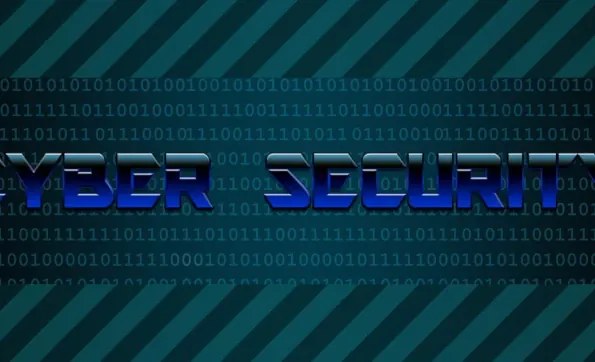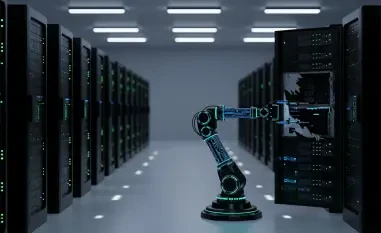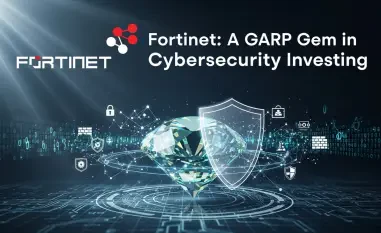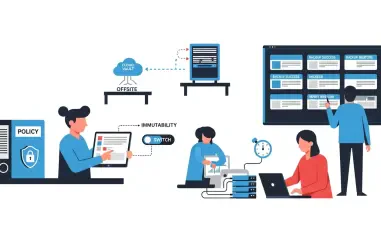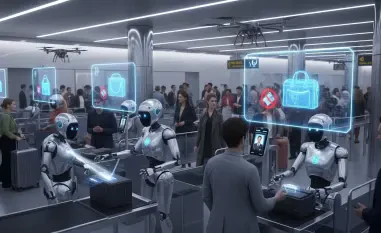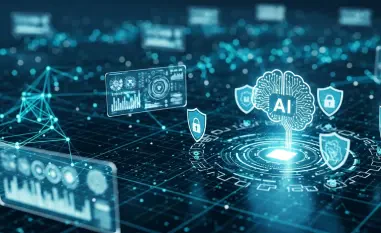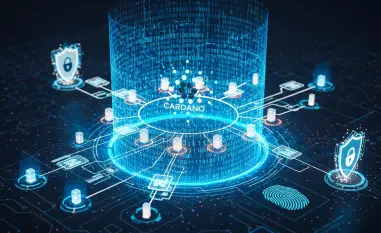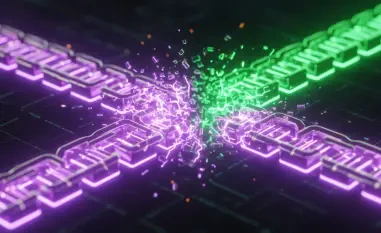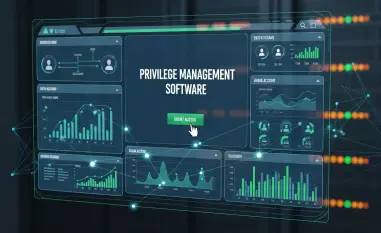The evolving landscape of cybersecurity presents a complex array of challenges for Chief Information Security Officers (CISOs). As they navigate new and emerging technologies to protect enterprise IT environments, they must remain vigilant, continually researching and assessing new solutions to preemptively address potential vulnerabilities and align with business priorities. This article delves into the top security solutions being piloted today by CISOs, supported by insights from the CSO Security Priorities Study, which surveyed over 870 CISOs, CSOs, and other cybersecurity leaders.
New Security Technologies and Their Importance
AI-Enabled Technologies
AI-enabled technologies are at the forefront of cybersecurity innovation, with 62% of CISOs piloting or researching tools that incorporate artificial intelligence. These AI capabilities can automate threat detection and response, analyze vast amounts of data at scale, and provide predictive insights to prevent attacks before they occur. The integration of AI in cybersecurity is crucial for enhancing the speed and accuracy of threat management. AI’s ability to process and analyze large datasets quickly allows for more efficient identification of potential threats. This capability is particularly significant as the volume and complexity of cyber threats continue to grow.
By leveraging AI, organizations can stay ahead of attackers and reduce the time it takes to detect and respond to incidents. Additionally, AI can help CISOs manage and interpret the overwhelming amount of data generated by modern IT environments, offering targeted and effective security measures. However, implementing AI-enabled technologies comes with its own set of challenges. CISOs must ensure that these tools are properly integrated into existing systems and that they are fine-tuned to minimize false positives. This requires a deep understanding of the organization’s unique threat landscape and a strategic approach to AI deployment.
Zero-Trust Architectures
Zero-trust architectures are a significant focus for 48% of CISOs. This cybersecurity model assumes that threats could exist both inside and outside the network, necessitating the verification of every access request as though it comes from an open network. The primary goal of zero-trust strategies is to minimize risk by ensuring that trust is never assumed and access privileges are meticulously managed. Implementing a zero-trust model involves several key components, including multi-factor authentication, continuous monitoring, and strict access controls.
These measures help to ensure that only authorized users can access sensitive data and systems, reducing the risk of insider threats and unauthorized access. The transition to a zero-trust architecture can be complex and requires careful planning and execution. CISOs must work closely with other stakeholders to ensure that the necessary policies and technologies are in place and that users are adequately trained on the new security protocols. For many organizations, this shift represents a significant change in how access and permissions are granted, requiring a cultural change along with technological adaptation.
Security, Orchestration, Automation, and Response (SOAR)
Security, Orchestration, Automation, and Response (SOAR) platforms are being explored by 46% of CISOs as a way to streamline security operations. SOAR platforms integrate disparate security tools and systems, enabling automated responses to incidents and simplifying threat management. This technology aids in correlating alerts and streamlining workflows, which can markedly enhance the efficacy of security operations. By automating routine tasks and incident responses, SOAR platforms free up valuable time for security teams to focus on more strategic initiatives. This can lead to improved overall security posture and faster resolution of security incidents.
However, the successful implementation of SOAR requires a thorough understanding of the organization’s existing security infrastructure and processes. CISOs must ensure that the platform is properly configured and that all relevant security tools are integrated to maximize the benefits of automation. The customization and fine-tuning of SOAR platforms are critical to avoiding inefficiencies and ensuring the technology’s alignment with specific organizational needs. Moreover, consistent monitoring and adjustments are necessary to handle evolving threats effectively.
Deception Technology
Deception technology, cited by 45% of CISOs, involves deploying decoys and traps to mislead attackers and detect them early in their attempts to probe the network. This proactive method helps organizations understand and preempt attacker methodologies and tactics. Deception technology can provide valuable insights into the behavior and techniques of cyber attackers, allowing organizations to develop more effective defenses. By creating a realistic but fake environment, security teams can observe and analyze attacker movements without risking actual assets.
The deployment of deception technology requires careful planning and execution to ensure that decoys are convincing and that the system can effectively detect and respond to intrusions. CISOs must also consider the potential impact on network performance and ensure that the technology is seamlessly integrated into the overall security strategy. Effective deployment of deception technology can greatly enhance an organization’s ability to detect threats early, offering a strategic advantage in mitigating potential damages.
Challenges in Implementing New Technologies
Integration Complexities
Understanding the implementation challenges of new security technologies is critical for CISOs. The difficulty of integrating new security tools and solutions within existing systems is underscored by the constantly evolving nature of threats and IT environments. There’s a significant risk of cybersecurity leaders falling into the trap of chasing market trends without thoroughly assessing whether new technologies align with their specific business needs. The fragmented nature of cybersecurity tools often requires organizations to deftly piece together various technologies to create a robust defense mechanism.
This complexity can be a source of frustration and operational inefficiency. CISOs can mitigate these challenges by adopting a strategic approach to technology integration. Prioritizing a business-aligned approach, emphasizing the need to identify and prioritize security blind spots that are most pertinent to the organization’s operations, is crucial. This entails understanding the unique risk landscape of the business and targeting technologies that can address these critical vulnerabilities.
Efficient management of integration complexities also involves close collaboration with other departments and continuous engagement with stakeholders to ensure that new technologies do not disrupt existing operations. A phased, methodical approach to implementation, informed by thorough risk assessments and pilot testing, is recommended to ensure smooth integration and alignment with business processes. By carefully managing these challenges, CISOs can enhance their security infrastructure while ensuring operational stability and efficiency.
Phased Implementation Approach
A phased approach to implementing cutting-edge security technologies is recommended by experts like Pablo Riboldi, CISO of BairesDev. He illustrates this strategy with BairesDev’s implementation of zero-trust technologies, where the initial focus was on high-risk applications before broadening the scope to other access scenarios. This approach ensures that new technologies integrate smoothly with minimal disruption while allowing for continuous evaluation and adjustment.
Similarly, for their SASE deployment, BairesDev prioritized integration with existing cloud-based services and comprehensive user training. By taking a methodical approach and collaborating closely with stakeholders, the company maintains alignment between new technologies and business objectives. This phased approach allows for incremental improvements and reduces the risk of widespread issues, offering CISOs a roadmap for successful technology adoption without overwhelming their existing systems.
Furthermore, this strategy enables organizations to react swiftly to any unforeseen challenges during the initial rollout phases, making necessary adjustments before scaling the technology deployment. Continual assessment and feedback loops are integral to this process, ensuring that each phase builds on the success of the last while addressing any emerging vulnerabilities or inefficiencies.
AI-Enabled Technologies
Scaling and Integration Challenges
CISOs exploring AI-enabled cybersecurity solutions face unique challenges, particularly in understanding what specific areas require scaling. Sakshi Grover from IDC Asia advises that identifying the exact problem areas in need of AI intervention, such as configuration management or threat detection, is crucial. This clarity can help in better selecting AI-driven technologies and in setting realistic expectations for their capabilities.
To optimize the deployment of AI-enabled technologies, organizations need to ensure these tools are integrated effectively with existing systems. Mital Patel, CIO of Caxton, shares insights into implementing AI solutions for threat detection and response, particularly for monitoring login activities and abnormal user behaviors. Initially, the implementation led to numerous false positives, underscoring the importance of fine-tuning AI parameters and giving the system ample time to learn from the infrastructure.
Vendor Evaluation
Evaluating vendors for AI and other new technologies is inherently risky. Grover emphasizes the need for rigorous early-stage vetting, focusing on how vendors handle data, their metrics for success, and projected ROI. Certification of vendors by third parties offers an additional layer of assurance that the solutions work as advertised and meet standardized benchmarks. Careful consideration of vendor capabilities and experience can significantly influence the successful integration and effectiveness of new technologies.
A thorough evaluation should include looking into the vendor’s track record, their approach to data privacy and security, and their support and maintenance services. Partnerships with certified vendors can mitigate risks and provide CISOs with confidence in the reliability and security of the solutions they implement. This detailed assessment ensures that technology investments yield the desired outcomes and align with broader cybersecurity objectives.
Prioritizing Technologies
Aligning with Business Needs
The overarching trend from the article is the importance of CISOs prioritizing technology pilots based on their alignment with business needs and security objectives. This involves discerning how technologies like SASE, threat detection and response, and identity management align with their protective goals, whether it is safeguarding data, networks, APIs, endpoints, or identities. Grover advises that rather than viewing these technologies as optional, enterprises should consider all these categories essential and prioritize based on what mitigates their highest risks.
Identifying the most relevant technologies involves a comprehensive analysis of the organization’s threat landscape, current security posture, and potential vulnerabilities. By aligning technology priorities with business objectives, CISOs can ensure that their security investments provide maximum value and support the broader goals of the organization.
Effective prioritization also requires continuous monitoring and reassessment. As new threats emerge and business priorities evolve, CISOs must remain agile, adjusting their technology strategies to maintain robust defenses. This dynamic approach enables organizations to stay ahead of evolving cyber threats while ensuring that their security measures are always in step with their operational needs.
Conclusion
The rapidly changing landscape of cybersecurity poses numerous challenges for Chief Information Security Officers (CISOs). Faced with the task of protecting enterprise IT environments amid a backdrop of constant technological advancements, they must stay vigilant. It is crucial for CISOs to continuously research and evaluate new security solutions to proactively address potential vulnerabilities and ensure that these solutions align with their business priorities.
This article explores the latest security solutions being tested by CISOs, based on insights from the CSO Security Priorities Study. This study includes responses from over 870 CISOs, Chief Security Officers (CSOs), and other cybersecurity leaders, offering a comprehensive overview of the current trends and priorities in the field of cybersecurity. As these leaders pilot various cutting-edge technologies, their goal is to stay ahead of potential threats and ensure their organization’s security measures are both robust and adaptive.
The insights provided by the CSO Security Priorities Study highlight the importance of a proactive approach in cybersecurity. By understanding and implementing the most effective security solutions, CISOs can better protect their organizations against the ever-evolving threats in the digital world. The study underscores the necessity for cybersecurity leaders to remain informed and prepared, continually adjusting their strategies and tools to meet the challenges they face.
